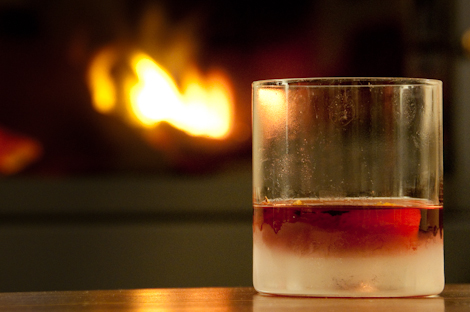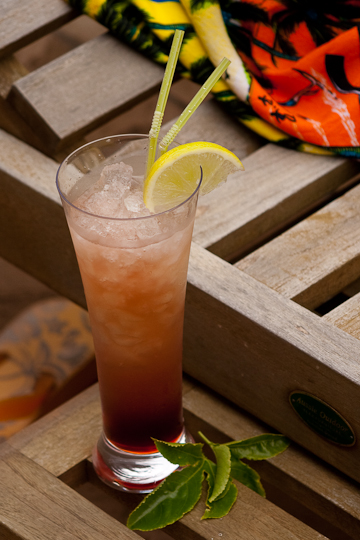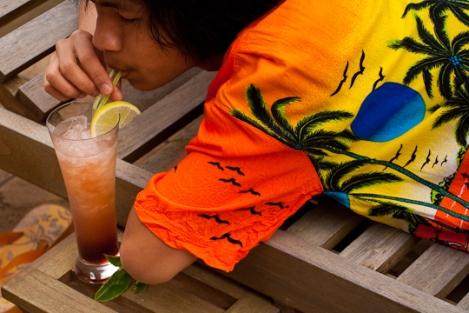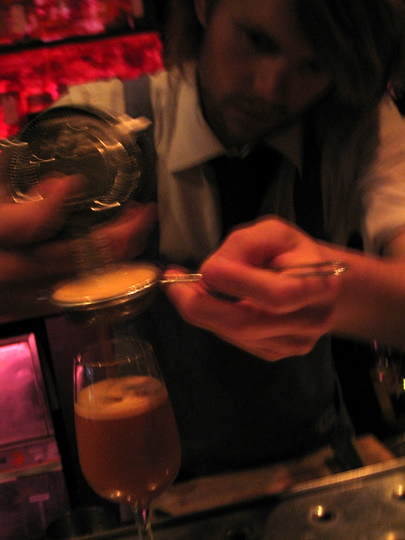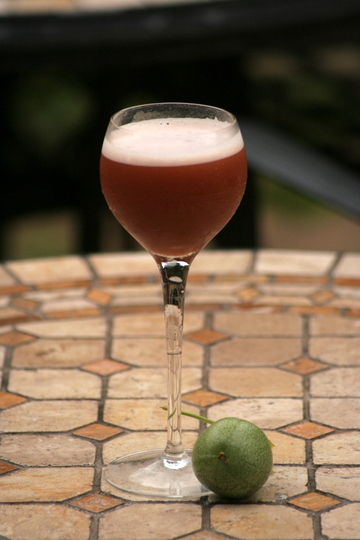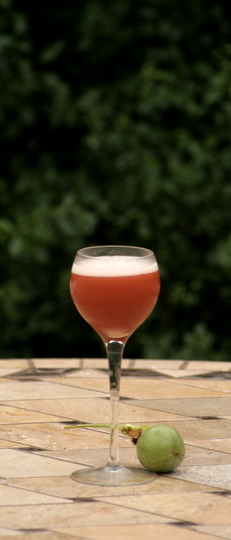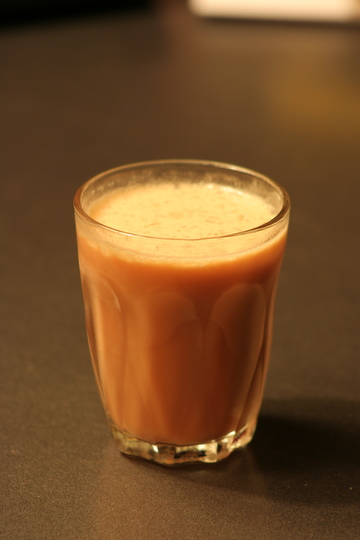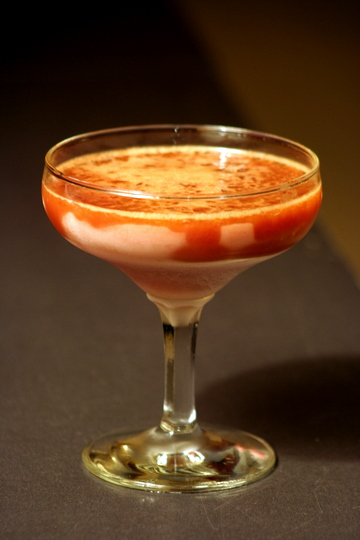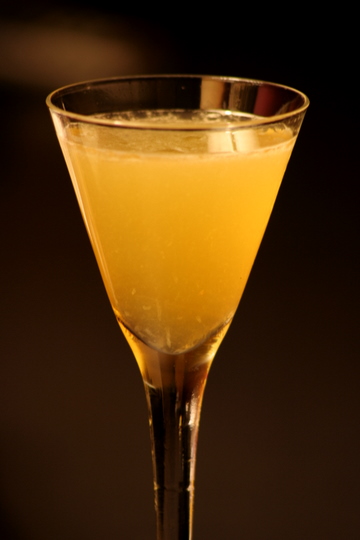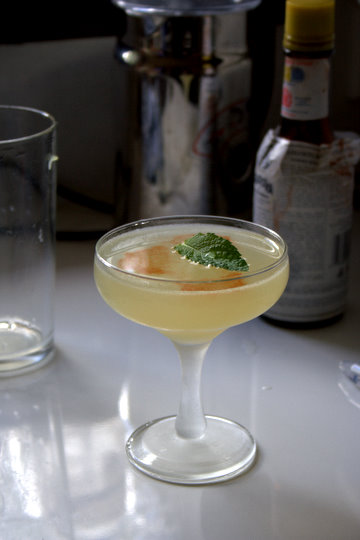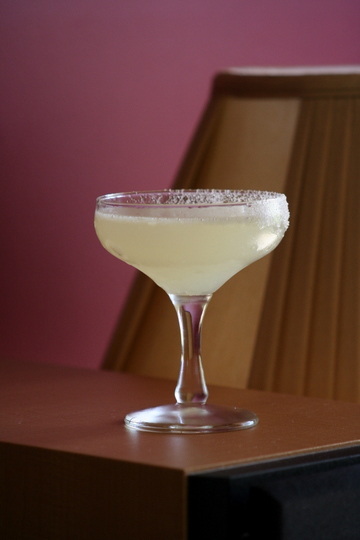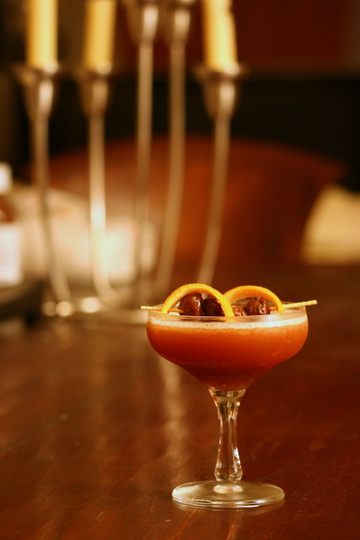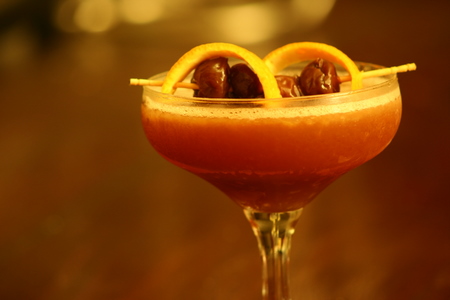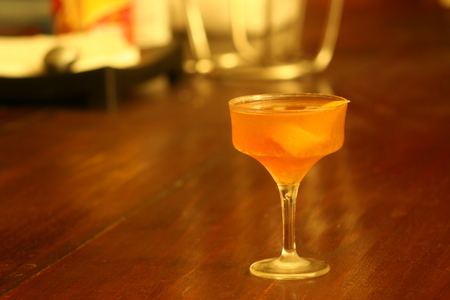 This month’s Mixology Monday is hosted by the eGullet forums, a great online resource for culinary information. The theme of the month is “Dizzy Dairy”; anything involving milk, cream, eggs, butter, cheese, etc.
This month’s Mixology Monday is hosted by the eGullet forums, a great online resource for culinary information. The theme of the month is “Dizzy Dairy”; anything involving milk, cream, eggs, butter, cheese, etc.
Eggs are one of my favourite ingredients to work with in cocktails. Many of my favourite drinks owe their excellence to the texture imparted by egg white; for example, a Whiskey Sour is wholly elevated by the addition of 10mL of egg white. In this post, I’ll be covering a few egg-based drinks which I think don’t get enough press on the net; the Royal Gin Fizz, the Prado, 1806’s Margarita Custard, Morning Glory Fizz and the Golden Gin Fizz.
The Royal Fizz was a pre-prohibition subcategory of the Fizz, essentially referring to fizzes shaken with whole eggs. They could be made with any spirit, though I believe it was most popularly ordered with gin. The Royal Fizz and its cousins the Golden and Silver Fizzz (made with an egg yolk or white, respectively) are near extinct in the majority of bars these days, as people have shied away from the once-popular practise of imbibing raw eggs, particularly as morning-after drinks. This is a real pity as I believe they are great and equally palatable variations on the simple Fizz, which can get pretty boring fast.
Royal Gin Fizz

1 1/2 Gin (Plymouth)
1 lemon juice
2tsp sugar syrup (2:1)
A whole egg
~1 1/2 Soda
Shake the gin, lemon juice, sugar syrup and egg without ice for a decently long time to combine and aerate. Shake with ice and strain into a small tall glass. Top with soda water.
I found the Royal Gin Fizz to largely approximates a Ramos Gin Fizz in flavour, but without the creaminiess and stability of froth. I may even prefer this to the Ramos, being less thick and filling. It didn’t foam as much as I’d have liked on the head due to the soda water I used being less than freshly opened. Rich and floral, but tangy and refreshing. Between this and a Continental Gin Sour I made at a friend’s house a few weeks ago, I find that pairing egg with gin really brings out the floral notes present.
I invited my friend Nick over to taste the following drinks with me.
The Prado is a sort of Margarita variation, subbing Maraschino for Triple Sec and adding an egg white. Though Washington Post claim it was created by Kacy Fitch of the Zig Zag Café, the drink actually dates to at least 1977, being printed in Jones’ Complete Bar Guide. Zig Zag have certainly made a good effort at popularising it, however.
Prado
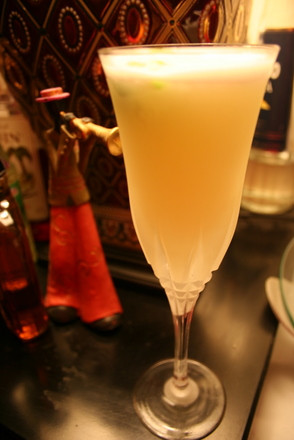
1 1/2 Tequila (Sauza Blanco)
3/4 Lime juice
1/2 Maraschino Liqueur (Baitz)
3/4 to 1 Egg white
Mime shake all ingredients. Shake with ice, strain into a chilled cocktail glass. Garnish with a lime twist, partly for the aroma but mainly because it looks pretty.
I like to use a whole egg white for this to get it as fluffy and light as possible. I’ve made this with both the Sauza Blanco and Tequila Blu Reposado, both mixto tequilas, but haven’t yet tried it with a 100% agave spirit. I actually preferred it with the Tequila Blu, whose harsher character and strong pepper note held its ground better in this mix. The Sauza is more subtle. This is one of my favourite tequila drinks, a crowd pleaser I use to introduce people to egg white. Given there’s a half ounce of liqueur in there, it’s surprisingly not particularly sweet, and fairly bitter. When shaken right the texture is heavenly, like sipping a cloud. I noted on this tasting that the tequila and especially the Maraschino dominated the flavour when the drink was on the tongue, but upon swallowing a wave of lime burst over the palate, leading into a mildly bitter finish.
The Margarita Custard is yet another riff off the Margarita, but a fairly unique one. Created by Sebastian Reaburn of 1806, a Melbourne cocktail bar that specialises in history, this ‘drink’ is like a lemon custard, only alcoholic. Here is Reaburn’s recipe:
Margarita Custard
A modern take on a 1930s favourite
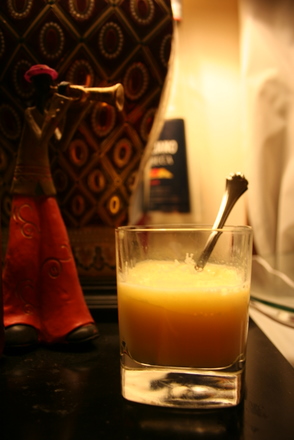
30ml Herradura Blanco Tequila or Cuervo 1800 Blanco Tequila
30ml Cointreau
20ml fresh lemon juice
15ml sugar syrup
1 whole egg.
Whip ingredients together well. Pour into a heat resistant glass. Heat using the steam wand of a coffee machine until the mixture sets. Garnish with a light dusting of grated nutmeg. Serve with a spoon. Eat while hot!
I used Trago Silver for the tequila, and 2tsp of sugar instead of the syrup. I’ll be honest, every time I’ve made this I forgot the nutmeg finish. Regardless, the Margarita Custard is amazing. I’ve never tried it at 1806, but have not been disappointed by it at home. Very upfront orange flavour, luxurious texture and a lovely alcohol burn that results from the heat – this can be off putting to some. Being essentially a lemon custard, this is obviously an after dinner treat.
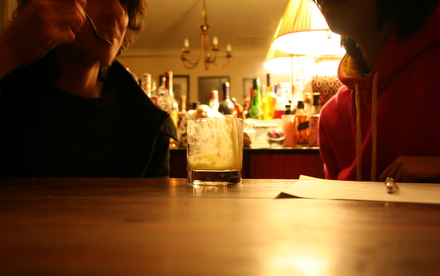
Lacking a steam wand, I cooked this in the microwave instead. This brings some complications – it is essential that you get the cooking time right lest you end up with scrambled eggs. I have found it hard to get it to a satisfactory overall texture without having a few scrambly bits in, mostly at the bottom of the glass. Whilst these bits can be pretty detrimental to the texture, it’s not such an issue as the drink/food is far more than delicious enough to make up for it. I advise that you start with a shorter microwave time first, check the custard and microwave it further as required. In my microwave, about 40 seconds on the medium high setting does the trick. I have not yet experimented with stirring the mixture during cooking, for fear of ruining the texture, but may try this in the future.
This is my take on the Morning Glory Fizz. The Morning Glory Fizz was intended as a 19th century hangover cure. Inspired by my favourite bar Der Raum’s own interpretation, the delicious Islay Morning Fizz which uses Ardbeg 10 as a base and rosemary as a garnish, I basically took a standard Morning Glory Fizz recipe and added some Islay scotch and a few dashes of Peychaud’s bitters.
Morning Glory Fizz
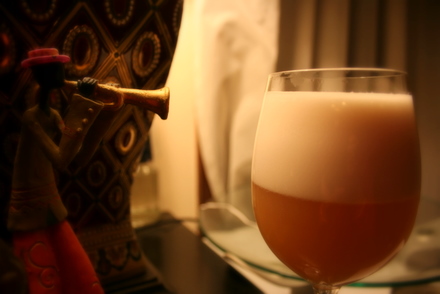
1 Blended Scotch (Famouse Grouse malt)
1/2 Islay Scotch (Laphroaig 10)
3/4 Lemon juice
3/4 Egg white
2tsp sugar
1tsp Absinthe/Pastis (Ricard) (slightly scant, maybe 4mL)
3 dashes Peychaud’s bitters
~1 1/2 soda water
Mime shake the lemon juice, sugar and egg white. Add the blended scotch, Peychaud’s bitters and absinthe to the shaker. Rinse the inside of a chilled wineglass with the Islay Scotch, pouring it into the shaker as well. Shake hard with ice. Strain into the chilled wineglass and top with soda.
I managed to work a huge and dense foam on it this time. This was probably due to using a freshly opened bottle of soda for the drink, a practise which I heavily recommend for all carbonated drinks but especially egg fizzes, where it is paramount that you build a nice head. It also seems it might be very important with such foam-topped drinks (including the Singapore Sling) to pour the soda directly into the drink, without jiggering. Jiggering the soda takes a lot of the initial fizz away, which I think may really diminish the frothing ability. Of course a lot of other factors were in play when I’ve mixed these drinks, such as freshness of the soda, so I can’t say this entirely conclusively.
Other notes on the method: I find that mime shaking the sugar with the citrus and egg is enough to dissolve it well. Make sure you don’t add the alcohol at this stage as it inhibits the dissolution of sugar. If you’re using sugar syrup you can just skip that step, of course. I like to rinse with the Islay before shaking the Islay in to get more of it on the nose whilst drinking.

This was a very nice drink. Nick commented that it was “very well balanced”. In the past when I’ve mixed this the pastis has kind of dominated (not unpleasantly), but this time it played nice with the others, perhaps because I used a mL or two less than I normally poured (hence the scant in the recipe above). After drinking through some of the thick foam, we hit the body of the drink, finding a fizzy citrus tang which gave way to anise flavours and lingering smoke. I think I could have done with a stronger Islay presence in this drink, perhaps using only Islay scotch as the base, but I don’t think I can afford to mix a 1 1/2 ounce pour of single malt every time I want one of these. It’s fantastic as is.

Having an egg yolk left over from the above drinks, I decided to also give the Golden Gin Fizz a try. Instead of using the recipe I used for the Royal Gin Fizz above, I took my Tom Collins proportions and added the egg yolk, which turned out to not be such a good idea…
Golden Gin Fizz
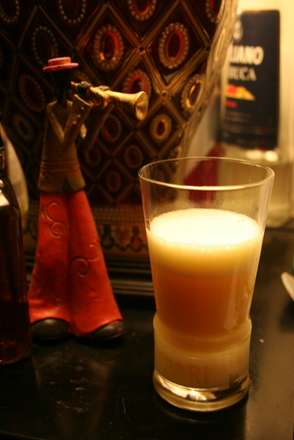
1 1/2 Gin (Beefeater)
3/4 Lemon juice
1tsp sugar
An egg yolk (approximately 15mL)
~2 Soda water
Mime shake lemon juice, sugar and egg yolk to combine and aerate. Add gin, shake hard with ice. Strain into a small tall glass. Top with soda awter.
This turned out distinctly bitter, perhaps remediable by increasing the sugar content or using Plymouth gin instead. Or maybe the somewhat large soda pour I gave accented the bitterness. Essentially, this would have turned out a better drink had I followed the recipe for the Royal Fizz above and simply omitted the egg white, as the richer nature of the drink calls for more sugar than a tart Collins or plain Fizz. I also prefer the the Royal Gin Fizz overall for its airier texture – the egg white quite improves the mouthfeel. This was still an enjoyable drink, but really, I reckon you might as well throw the whole egg in or stick with an eggless Gin Fizz.
That’s all for this post. I also made Nick a fresh grapefruit Paloma (which I’ll write about later) and we had a nip of Ferro-China Bisleri, an iron tonic amaro…

 This month’s Mixology Monday is hosted by Lindsey at Brown Bitter and Stirred, and the theme is… Brown, Bitter and Stirred. As a lover of spiritous drinks, aged liquor and bitters (potable or not), I couldn’t resist the opportunity to take my second foray into the MxMo crowd.
This month’s Mixology Monday is hosted by Lindsey at Brown Bitter and Stirred, and the theme is… Brown, Bitter and Stirred. As a lover of spiritous drinks, aged liquor and bitters (potable or not), I couldn’t resist the opportunity to take my second foray into the MxMo crowd.